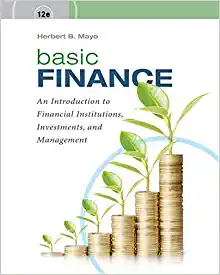Question
Hi, can you please help me answer any of this? Q1 Bank Trust is a US bank. The bank has been lending abroad and borrowing
Hi, can you please help me answer any of this?
Q1
Bank Trust is a US bank. The bank has been lending abroad and borrowing in the US markets, thus the bank is exposed to foreign exchange risk. In a recent transaction, the bank borrowed US$10 million via a one-year security at 5 per cent per annum nominal and funded a loan in Euros at 7.5 per cent. The spot rate at the time of this transaction was 1.19US$ =1(USD/Euro = 1.19).
(a) Immediately after the transaction closing, the bank received information indicated that the Euro would depreciate to US$1.18/1 by year end (i.e. 1.18US$ =1). If the information is correct, what will be the realised spread on the loan? Assume adjustments in principal values are included in the spread.[3 marks]
(b) Suppose the bank had an opportunity to sell one-year forward Euros at US$1.191/1 (i.e. 1.191 US$ =1). What would have been the spread on the loan if the bank had hedged forward its foreign exchange risk exposure?[2 marks]
(c) What does interest rate parity concept imply about the spread from investing in international markets calculated in part b?[2.5 marks]
(d) Suppose the bank decided to hedge foreign exchange risk using on-balance sheet technique. Without performing any calculations, explain the steps that would be followed to implement this technique. Explain how this technique reduces foreign exchange risk exposure.[2.5 marks]
Q2
AAA Bank is an Australian bank, the bank wants to measure its market risk exposure by calculating the daily earnings at risk (DEAR) on its trading portfolio.
The bank's trading portfolio consists of the following assets:
(a) Fixed-income securities (Bonds):
The bank holds a 10-year zero coupon bond with a face value of AUD$3,500,000. The bond is trading at yield to maturity of 3
percent. The potential adverse move in yields is 0.0025
Calculate DEAR for Fixed Income if a 90% confidence limit is required.[2 marks]
(b) Equities:
The bank holds an AUD$6 million trading position in stocks that reflects the stock market index (the= 1). Over the last year, The historical mean change in the stock market index was 0.0 per cent and the standard deviation of the stock market index was [depends on the last digit of your student ID*]
*If the last digit of your student ID is an odd number (for example XXXXXX9, the standard deviation of the stock market index was 1.6%
If the last digit of your student ID is an even number (including 0) (for example XXXXXX0 or XXXXXX4, , the standard deviation of the stock market index was 2.1%
****** Last Digit is "7"******
Calculate DEAR for equities if a 90% confidence limit is required. .[2 marks]
(c) Foreign exchange:
The bank has a net long position of 7.5 million Euros (7.5M) at the close of business on a particular day. The exchange rate is AU$1.63/1 (i.e. 1.63 AUD =1) at the daily close. Looking back at the daily changes in the exchange rate of the euro to AUD for the past year, the bank finds that the historical mean change in daily exchange rates was 0.0 per cent and the volatility or standard deviation () of the spot exchange rate was 0.66%.
Calculate DEAR for FX if a 90% confidence limit is required.[2 marks]
(d) Now assume correlations (ij) among assets are as follows
____________________________________________________________ ____________
Foreign Exchange Bond -0.5
Foreign Exchange
Stocks 0.4
0.3
Calculate 10 day Value at Risk (VAR) of FIM bank's trading portfolio using a 90% confidence level and explain how the VAR position would be interpreted.[2 marks]
(e) Explain the weaknesses of the RiskMetrics model in measuring market risk. Further explain the impact on the estimate of market risk due to the weaknesses in the model. [2 marks]
Q3
(a) FIM Bank has the following balance sheet (in millions), with the risk weights in parentheses. The bank has no offbalance sheet activities.
Assets
Liabilities and Equity
Cash (0%)
$10
Deposits
$271
OECD interbank deposits (20%)
10
Subordinated debts (10 years)
2
Mortgage loans (50%)
160
Non cumulative (perpetual) preference shares
2
Consumer loans (100%)
100
Equity
5
Total Assets
$280
Total liabilities and equity
$280
Assuming that operational risk and market risk are both zero, does the bank have enough capital to meet the Basel III Common Equity Tier 1, Total Tier 1, Total capital requirements?(1 mark)
(b) Explain the reasons why some off-balance sheet instruments are excluded in the calculation of credit risk adjusted off-balance sheet asset value(2 marks)
(c) Explain how capital buffers imposed in Basel III attempt to address counter cyclical and systemic risk issues of Basel II(4 marks)
(d) Explain why Basel III capital requirements are still unable to make a level competitive playing field across all banks on a global level(3 marks)
Q4
(a) Explain the impacts on a depository institution's balance sheet when it uses stored and purchased liquidity management to offset :
- the liquidity effects of a net deposit drain of funds and
- the exercise of loan commitments.
What are the operational benefits and costs of each method ?(1.5 marks)
(b) Suppose you forecast interest rates toincrease. Carefully explain the following techniques based on the interest rate forecast.
- Ladder of maturity approach(1.5 mark)
- Riding the yield curve (3 marks)
(c) Suppose you forecast interest rates todecrease. Carefully explain the following techniques based on the interest rate forecast.
- Playing the yield curve(2 marks)
- Barbell approach (2 marks)
Step by Step Solution
There are 3 Steps involved in it
Step: 1

Get Instant Access to Expert-Tailored Solutions
See step-by-step solutions with expert insights and AI powered tools for academic success
Step: 2

Step: 3

Ace Your Homework with AI
Get the answers you need in no time with our AI-driven, step-by-step assistance
Get Started


